 For US growers in nine states, Trimble launches its new VRS Now Ag service to deliver RTK sub-inch positioning via cellular communications–without the need for a local base station.
For US growers in nine states, Trimble launches its new VRS Now Ag service to deliver RTK sub-inch positioning via cellular communications–without the need for a local base station.
Growers in Alabama, Colorado, Florida, Iowa, Illinois, Indiana, Kentucky, Mississippi and Nebraska can access VRS Now Ag. Additionally, European growers can receive correction services in Great Britain, Ireland, Germany, Czech Republic and Estonia. As with corrections supplied by conventional Real-Time Kinematic (RTK) radio towers, Trimble VRS network corrections provide sub-inch repeatable Global Positioning System (GPS) accuracy for precision farming operations such as tillage, planting, spraying and field preparation.
The Trimble VRS solution uses proprietary software to create correction models for regions covered by the network. The VRS service can provide growers with instant access to high-accuracy RTK positioning without the need for a local base station. VRS corrections are valuable in areas with natural obstructions such as trees and hilly terrain due to the fact that corrections are obtained by a cellular modem, rather than through the line-of-sight signals provided by an RTK tower.
Trimble pioneered RTK in the early 1990s as a means of delivering high-accuracy GPS positioning. Today, there are more than 750 million acres covered by Trimble agriculture RTK base stations. The VRS Now Ag service was developed to deliver high-accuracy positioning via cellular communications and provides more than 400 million acres of sub-inch accuracy.
“We are very pleased to provide Trimble VRS Now Ag service to nine U.S. states and five European countries,” said Erik Arvesen, vice president and general manager for Trimble’s Agriculture Division. “VRS Now Ag service provides an additional high-accuracy correction option for farmers who require reliable sub-inch positioning for their crucial field operations. Trimble VRS Now is fully supported and dedicated to the success of farmer field operations.”
A 12-month subscription will cost $1,200 or $1,500, depending on whether you want GPS only or access to GNSS. For more information visit www.trimble.com/agriculture/TrimbleVRSNowAg.aspx or contact your local Trimble dealer at www.trimble.com/locator.



 As you gear up for planting season, it’s wise to power up, check out and test your monitors, displays and other valuable electronic components before seed enters the planter and you head to the field.
As you gear up for planting season, it’s wise to power up, check out and test your monitors, displays and other valuable electronic components before seed enters the planter and you head to the field.
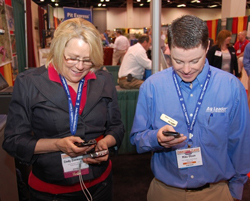 This photo was taken of me with
This photo was taken of me with 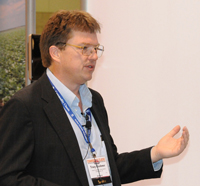 Iowa Soybean Association (ISA) Director of Research Tracy Blackmer was one of the presenters for the
Iowa Soybean Association (ISA) Director of Research Tracy Blackmer was one of the presenters for the 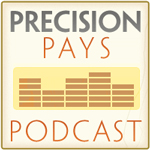 The Iowa Soybean Association started this project nine years ago to study both the environmental and economic aspects of farming practices and to help growers find out what works best for them on their operation. Since that time they have expanded into nine other states. “We’re trying to say that growers can use a lot of the precision ag technologies to actually identify which products or practices are working better,” Tracy says. “In Iowa alone we had over 450 replicated trials.”
The Iowa Soybean Association started this project nine years ago to study both the environmental and economic aspects of farming practices and to help growers find out what works best for them on their operation. Since that time they have expanded into nine other states. “We’re trying to say that growers can use a lot of the precision ag technologies to actually identify which products or practices are working better,” Tracy says. “In Iowa alone we had over 450 replicated trials.”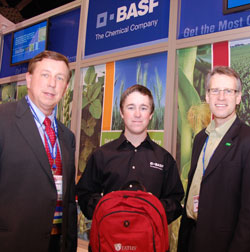 Ben Bellar, a high school senior from Howard, Kansas, was named the
Ben Bellar, a high school senior from Howard, Kansas, was named the 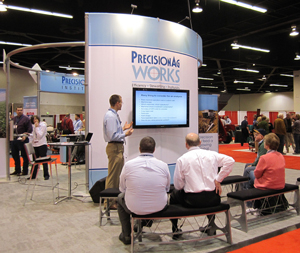 The first-ever PrecisionAg Learning Center at Commodity Classic was a big hit with growers at the trade show.
The first-ever PrecisionAg Learning Center at Commodity Classic was a big hit with growers at the trade show. 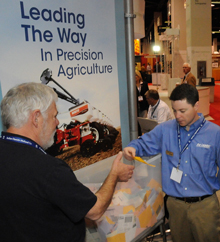 The Learning Center also offered growers the opportunity to register for great giveaways provided by PrecisionAg partners. In the photo to the right, Mike Olson with
The Learning Center also offered growers the opportunity to register for great giveaways provided by PrecisionAg partners. In the photo to the right, Mike Olson with